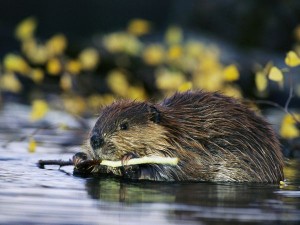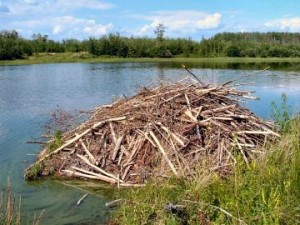Throughout history, humans have a love-hate relationship with beavers. Farmers despise them because beaver dams flood their precious cropland. Hudson’s bay company thank beavers for their pelts. Some of us might even find beavers kind of cute, with their big flat tails and giant guinea pig like figures. So, are beavers our friend or enemy? Here are the pros and cons that can better help you make your decision.
Beavers: The cons
Beavers are notorious for their destruction. With their teeth, beavers can cut trees up to 3 feet in diameter. Beavers use these trees to build dams on rivers and streams . These dams cause flooding which affects crops, pastures, and drowns stands of trees. This flooding can endanger public safety by saturating the soil and making bridges, and roads unstable. In addition, beavers can chew through valuable, rare and important trees. For example, they took out some of Washington D.C’s world famous cherry blossom trees. Also, fallen trees can pose as a hazard to utility lines and buildings.
What benefits do beavers provide?
Beavers provide several environmental benefits. One of the greatest benefit that beavers provide is the prevention of drought. An experiment done by Hood et al. show that beavers have a dramatic influence on the maintenance of wetlands during extreme drought. Due to their ability to create and maintain open areas of wetland, removal of beavers is equivalent to a wetland disturbance such as groundwater withdrawal. Another importance of beaver dams is the self purification of water in beaver ponds. Fine sediments and organic substances settle at the bottom which creates a perfect substratum for aquatic vegetation development. This creates a eutrophic pond and the pollutants flowing into the pond can be decomposed by micro-organisms. The dams also serve as macro-filters that stops the contaminants carried by the water current. For example, herbicides and pesticides that flow into streams are decomposed by bacteria in the beaver dams. Finally, wetlands formed from creation of beaver dams make wonderful habit for creatures such as fish, insects, amphibians, reptiles, and several types of aquatic plants.
So are beavers really all that bad?
In conclusion, other than physical and agricultural damage caused by flooding, beaver dams create lots of benefits such as drought prevention, purification of waters, and creating new habitats. Personally, I think the advantages beavers provide outweighs the disadvantages. Especially from an ecological point of view, the presence and activity of beavers positively influence the environment. Whether or not you feel the same is up to you.
Here is a video on how beavers build their dams to help better understand their impact on the environment:

Blog post submitted by: Celine Hsin




2 responses to “Beavers: Friend or Enemy”